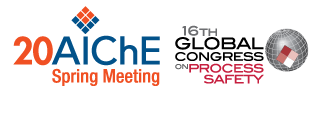

Chemical plants require more specialized fire protection features and systems than most industrial facilities. The extreme hazards associated with the chemical processing industry (CPI) can quickly lead to a cascading sequence of events that can result in a catastrophic loss. An unwanted release of flammable liquid, if not properly controlled, can result in a fire that can overtax sprinkler systems within several minutes. Such uncontrolled fires can compromise the integrity of vessels, piping, process safety systems or structural steel elements. This can lead to a collapse of process equipment/structures and a loss of process control.
The CPI faces unique challenges when it comes to automatic sprinkler protection and other fire mitigation techniques. This type of protection can be used for different purposes in the CPI. An assessment of the risk, plant layout, and overall loss mitigation goals will help decide which protection option is best suited to the application. This paper will outline some of those different protection schemes and when to use them. Due to the subjectivity and lack of definitive industry guidance for every situation, a qualified fire protection engineer and process safety expert should make the fire protection and safety design decisions described herein.
The overall conclusion is that process safety must be applied for loss prevention to decrease the likelihood of a loss occurrence and this should be combined with active and passive fire protection for mitigation of consequences. These topics should not be considered separately, but viewed as working in partnership as proactive and reactive systems. It is important that these subjects are administered and reviewed by experts in fire protection and process safety fields to ensure adequate protection schemes are employed and the information is properly covered and credited in the PHA process.
Presenter(s)
Language
Pricing
Individuals
| AIChE Member Credits | 0.5 |
| AIChE Pro Members | $19.00 |
| Employees of CCPS Member Companies | Free |
| AIChE Graduate Student Members | Free |
| AIChE Undergraduate Student Members | Free |
| AIChE Explorer Members | $29.00 |
| Non-Members | $29.00 |
